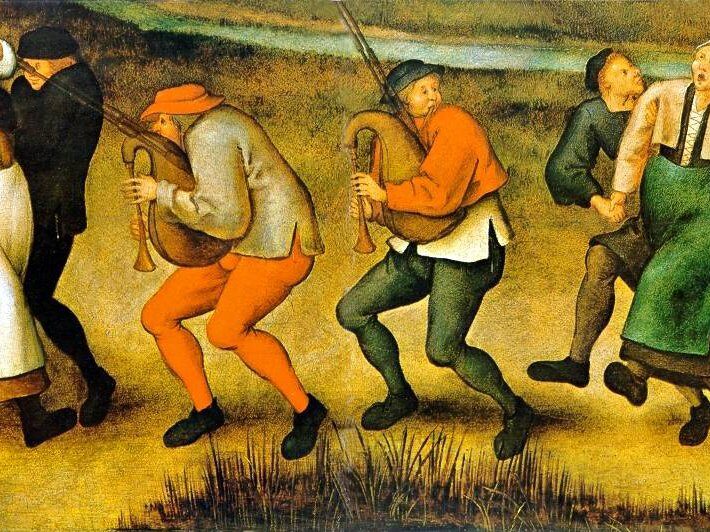The Dancing Plague of 1518: In June of 1518, a woman in Strasbourg, France began dancing uncontrollably in the streets. Soon, dozens of others joined in, and the "dancing plague" spread throughout the city, with some estimates suggesting that as many as 400 people were affected. The bizarre episode lasted several months and remains one of the most mysterious events in European history.
To this day, experts aren't sure what caused the frenzy, which could drive those who danced to exhaustion. The outbreak in Germany was called St. John's Dance, but it wasn't the first appearance of the mania or the last, according to The Black Death and The Dancing Mania, initially published in 1888. In the book, Justus Friedrich Karl Hecker imaginatively describes the spectacle of St. John's dance as follows:
They formed circles hand in hand, and appearing to have lost all control over their senses, continued dancing, regardless of the bystanders, for hours together, in wild delirium, until at length they fell to the ground in a state of exhaustion. They then complained of extreme oppression, and groaned as if in the agonies of death, until they were swathed in cloths bound tightly round their waists, upon which they again recovered, and remained free from complaint until the next attack.
The "disease" spread to Liege, Utrecht, Tongres, and other towns in the Netherlands and Belgium, up and down the Rhine River. In other times and other forms, the mania started to be called St. Vitus' dance. During the Middle Ages, the church held that the dancers had been possessed by the devil or perhaps cursed by a saint. Called Tarantism in Italy, it was believed the dancing was either brought on by the bite of a spider or a way to work out the poisons the arachnid had injected.







